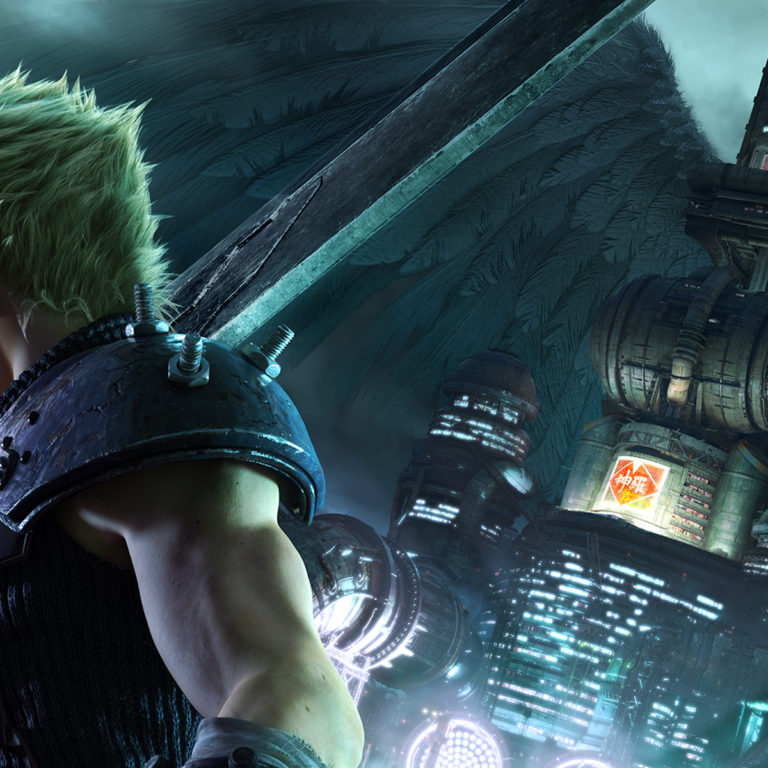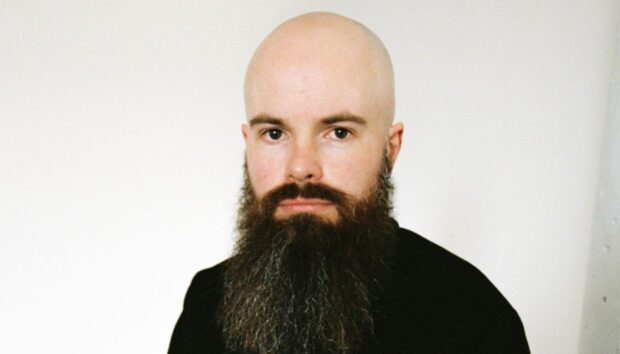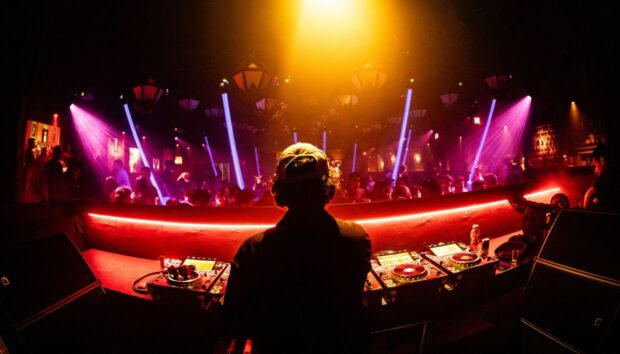Released in April 2020 to broad critical acclaim, SQUARE ENIX’s highly anticipated PS4 title FINAL FANTASY VII REMAKE reimagines the most beloved in the triple-A Japanese developer’s ongoing series of epic sci-fi/fantasy crossover RPGs for a new generation of gamers. As well as its lovingly crafted story and outstanding gameplay, 1997’s original FINAL FANTASY VII was lauded for its ambitious genre-hopping soundtrack, which saw composer Nobuo Uematsu push the PlayStation’s onboard sequencing, synthesis and sampling systems to their limits.
For this new version, running on the far more capable PlayStation 4, the sky was truly the limit on the audio side of things. Composers Nobuo Uematsu, Masashi Hamauzu, and Mitsuto Suzuki were able to take full advantage of everything modern music technology has to offer, including, of course, software and hardware by Native Instruments.
Although usually closed to the public and media, we were recently lucky enough to be granted exclusive access to SQUARE ENIX’s Work Room 3 (WR3), where we grilled one-third of the aforementioned trio, Mitsuto Suzuki, on the story behind Final Fantasy VII Remake’s in-game soundtrack.
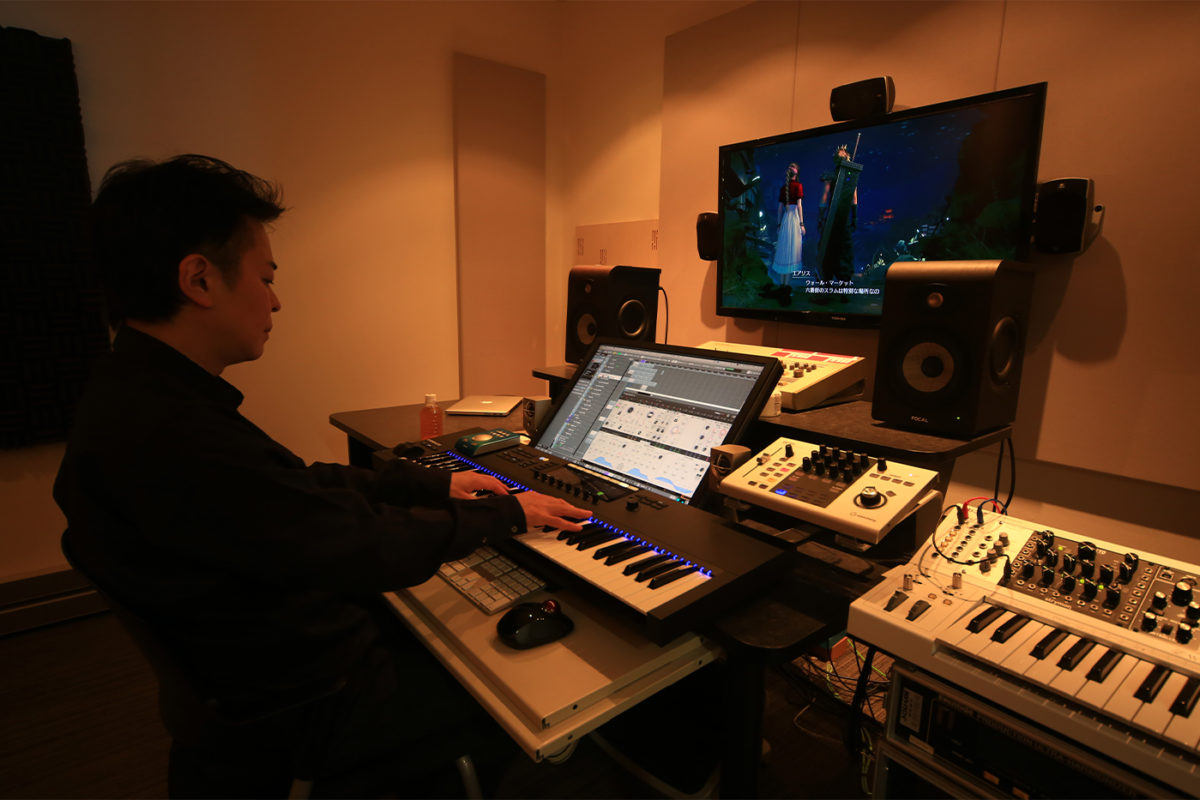
How much of the FFVIIR music did you produce, personally?
I produced most of the music for Chapters 4 and 9, which is about 40 minutes in total. The tracks are in different genres to fit various scenes – ‘Lay Down Some Rubber – Let’s Ride’, ‘Collapsed Expressway’, ‘Stand ‘Up, ‘Stamp’ and so on.
Was there an overarching concept behind the tracks you produced?
I wanted to make sure that people who played the original game would get a feeling of nostalgia, but also that it felt fresh. At the same time, for people new to the game, I wanted to convey that feeling of newness. One thing I was particularly adamant about was making sure I didn’t create anything cheesy. Although personally, even if the music is cheesy, so long as it resonates with me, I tend to love it. It was pretty difficult to keep this balance.
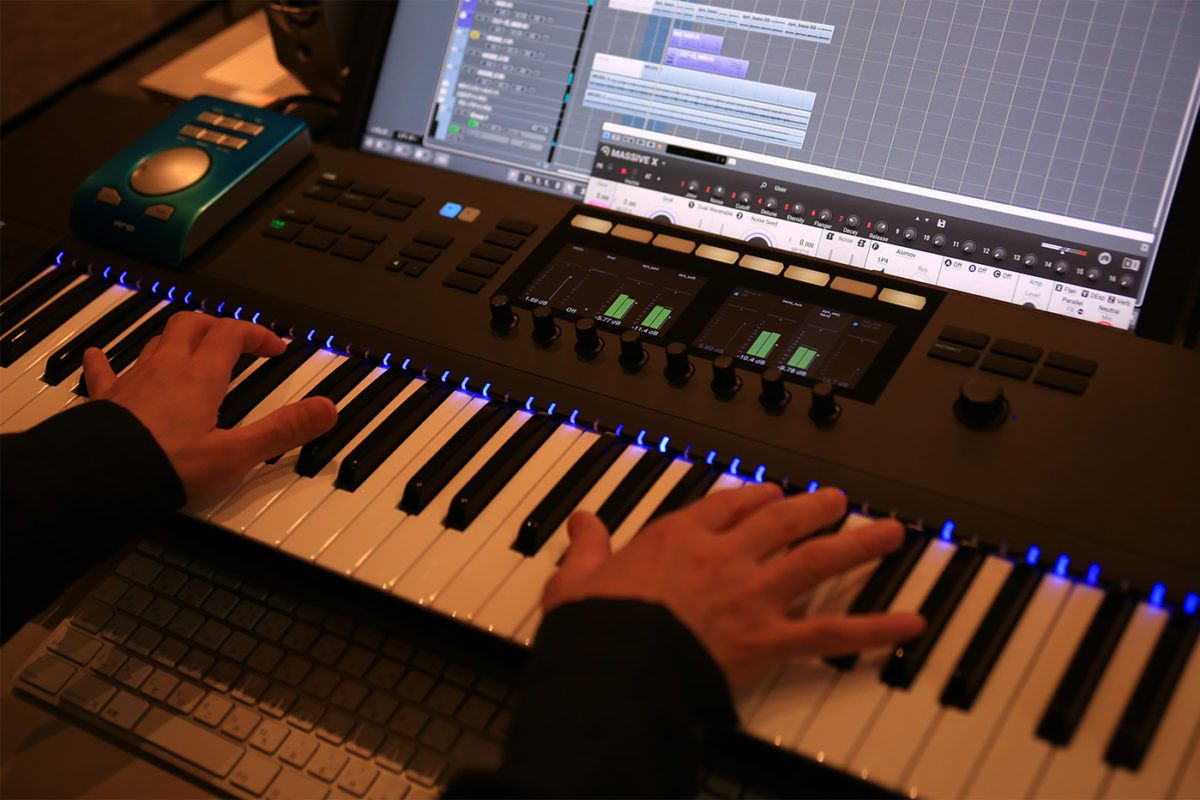
Was any track particularly problematic when it came to keeping that balance?
The Wall Market scene. The background music in that scene is what we call ‘interactive music’. It works kind of like a DJ mix, as when you move through the environment, the music changes to reflect the changes in that environment. I worked on three patterns of music for the scene, which I loosely defined as funk-based, ethnic-based and country-based, all sharing the arrangement, tempo and melody lines. Writing the music wasn’t much of a problem per se, but I did break a few bones trying to fit these three disparate musical styles within the frameworks of the same arrangement and tempo.
Saying that, I’m good at this kind of work, so it was also an opportunity to showcase my skills. Working with the lengths of the cutscenes was probably the hardest part. In particular, at the ‘Honeybee Inn’, which is mostly rooted in dance music, it was quite challenging to make a four- or eight-bar song work in six or seven bars. But it worked, didn’t it? I still get shivers thinking back to the staff meeting where people were murmuring, ‘Huh? Did the length change?’. [Laughs]
Presumably, you reference the storyboard of the game while writing the music…
Yes, that’s exactly how we work: we check the storyboard and proceed to work on the music. In the case of this remake, I thought I already knew the original story, but as we progressed, it turned out I had forgotten quite a few details. Fortunately, there were many changes where the story diverged from the original, which in turn affected the musical arrangements, so I was also working with the intention of creating new songs.
In terms of process, the cut scene from ‘Honeybee Inn’ was probably the most fun to work on. Usually, you’d build the music to match the length of the video, but in this case, the music was written first. When working with storyboards, you gather many clues from the character’s facial expressions, attitude, clothing and movements, and it serves as inspiration for the music.
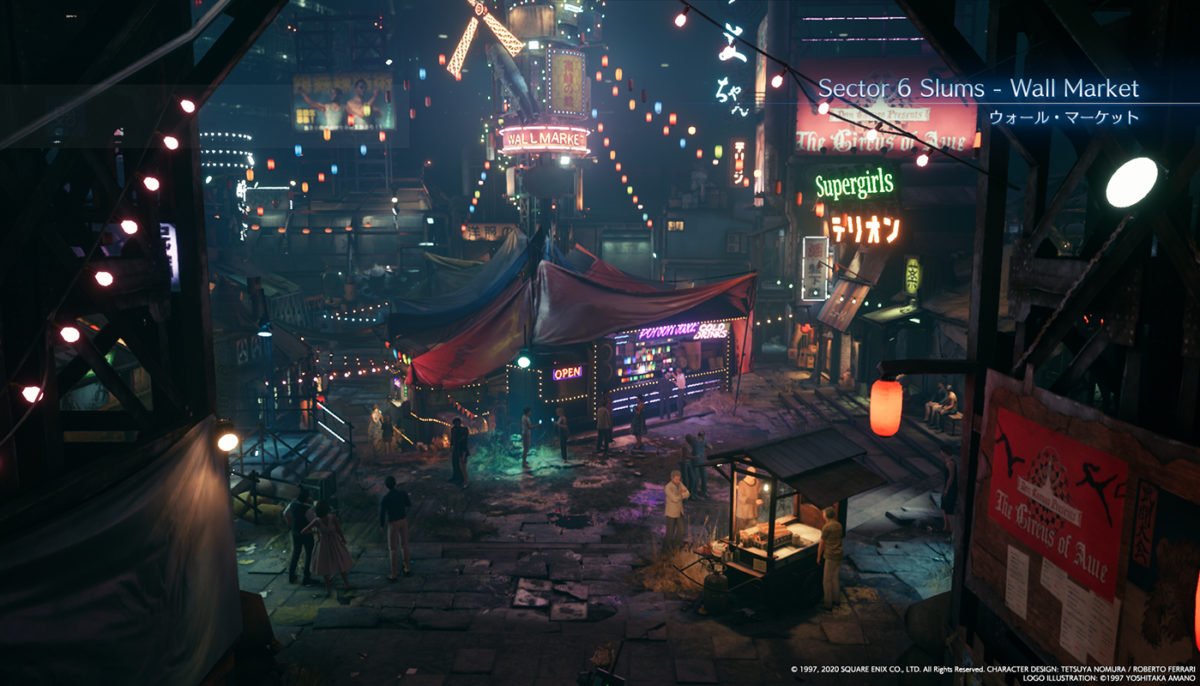
Any other favorite scenes you can tell us about?
I think the scene that I’m particularly fond of is in Chapter 9, when Cloud and Aerith set out on an adventure from the Collapsed Expressway in Sector 5. Musically, it starts with the ambient ‘Midnight Rendezvous’ and connects to the field song, ‘Collapsed Expressway’, creating an uplifting atmosphere of new adventure. ‘Collapsed Expressway incorporates a lot of Asian and ethnic elements; we also aimed to combine the sound of synthesizer with a gorgeous string section. Asuka Kaneko – aka Aska Strings – helped me out with the string arrangement in this part.
In fact, this time around, we had sessions with many musicians on a lot of tracks, not just ‘Collapsed Expressway’. People like Naoki Hirai, who played the drums in Boom Boom Satellites, and Ms Non, who provided the crazy noise guitar parts – no level of praise will do it justice. It was a huge honour and an inspiration to work with so many unique and talented musicians, and to make such exciting music together.
What were the biggest changes, sound-wise, in comparison with the original FINAL FANTASY VII?
Well, the previous title was released 23 years ago, and since then, the reproduction technology has changed radically, so it’s difficult to even begin to draw comparisons. But actually, not everything is entirely new this time – we have also sampled some of the original songs. I think fans will enjoy the nostalgic sound of the music. It’s my way of paying respect to the original FINAL FANTASY VII.
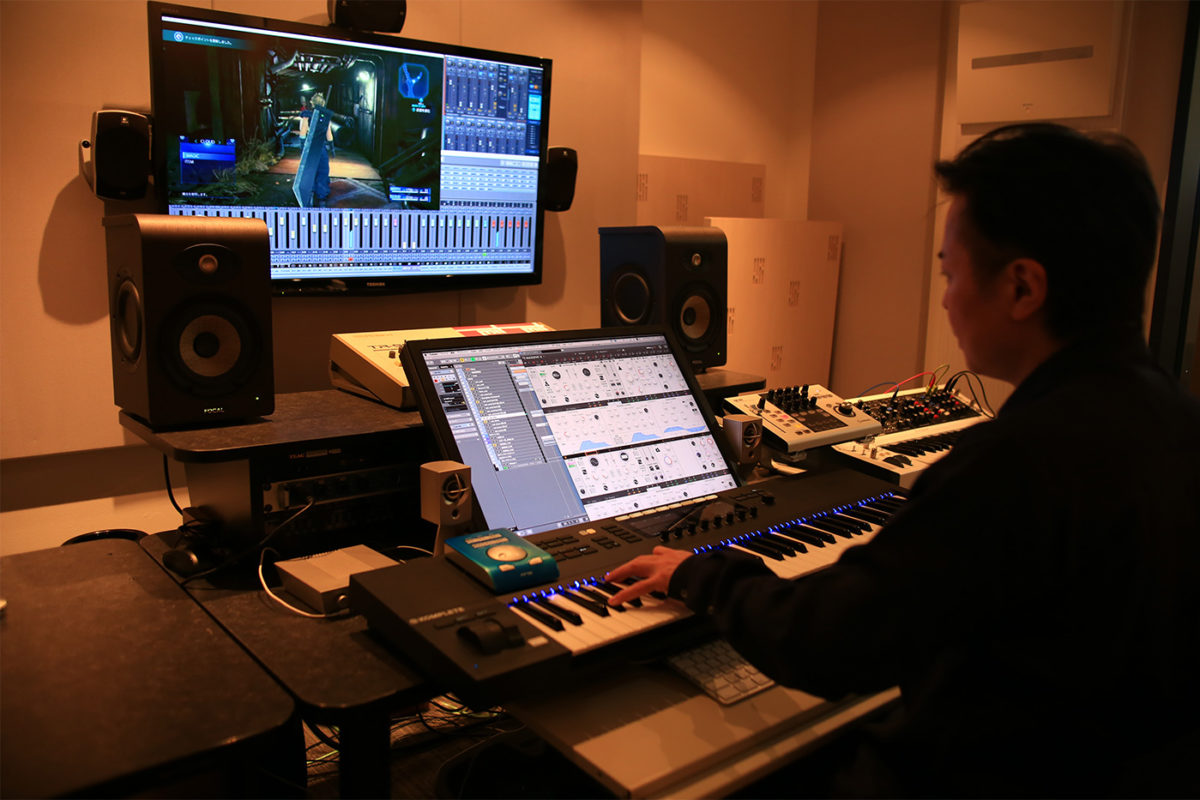
Tell us about your production setup here in WR3?
My computer is an Apple Mac Pro, my main DAW is Steinberg Cubase Pro, and my main keyboard is the Native Instruments Komplete Kontrol S61. This combination is very stable and easy to operate. I run an RME UFX interface with two sets of monitor speakers: Focal Shape 50 and Sony SRS-Z1. I also have a modded Roland TR-909, which allows me to momentarily mute the kick and snare, as well as a Waldorf KB37 with Behringer Model D, Strymon Magneto, and Doepfer A-199 SPRV modules, and a Sequential Circuits Prophet-5.
Can you give us some specific examples of NI instruments in action that we can listen out for in the FFVIIR soundtrack?
For the dance scene in Chapter 9 – ‘Honeybee Inn’, I used Maschine 2 and a few Expansions. I find it convenient that Expansions are divided by genre. I also like the fact that I can bypass the effects, mangle the included sounds, freely change sequences, mix and match various sounds, and just otherwise customize everything. I also use it as a sort of BPM-free preset library; I like that you can freely change the tempo. Another scene I should mention is the motorbike scene in Chapter 4 – ‘Lay Down Some Rubber – Let’s Ride’ – where I used a lot of Monark. Pretty much all the Moog-type bass in this scene is Monark. When you’re editing patches, the Komplete Kontrol S61 is indispensable.
When I start composing from an atmosphere standpoint, I usually load up Massive X. About 80% of ‘Midnight Rendezvous’ was done with Massive X. The arpeggio in the beginning and the melody were developed from presets. To be specific, the arpeggio part is from a preset called ‘Wisdom Oracle’ in the Plucked Strings category. I’m particularly fond of this sound, from the reverb to how it floats and changes scenery. The melody is ‘Wintery Tinkle’ from the Piano/Keys category. Massive X has a unique tonality and is particularly good at atmospheric sounds – you can easily change the tone simply by tweaking the WaveTable and NoiseSeed parameters. I also find the inbuilt reverb excellent – more often than not, I would only need to adjust the decay for the sound to fit the song.

And what are your go-to Native Instruments effects plugins?
I use the Replika delay plugin a lot. In games, we often work on music that’s loop-based, so when you export the files, they can end abruptly. When I’m implementing the music in the game, loops work fine, but when I’m later trying to port it to the soundtrack, I’ll often use Replika ‘Clouds’ preset in Normal mode and add a bit of reverb at the end of the loop. The ‘Clouds’ preset does exactly what the name implies: it has the soul of a delay but acts as a reverb and sort of provides this perfect cloudy atmosphere.
I also use Guitar Rig 5 pretty indiscriminately when I want to dirty up a sound. Regardless of whether it’s a guitar, synth or a vocal, it can instantly change the characteristics of the sound. When I’m working on a song, I focus on building the entire structure of the song first, so I find effects very useful when I want to get some excessive sounds afterwards.
Finally, what’s the best way to listen to and fully enjoy the music of FINAL FANTASY VII REMAKE?
FINAL FANTASY VII REMAKE is kind of like a movie soundtrack: there’s rock, dance music and multiple genres and elements intertwined to build the overall FINAL FANTASY world view. Personally, I think it’s fun to walk around alone, to focus, listen and enjoy the music in its own right. We’ve adopted the concept of interactive music, so the music should change seamlessly in response to the player’s movements, and I think that adds to the fun. If you play the game and enjoy the sounds and the music that we worked on, that would make me really happy.
© 1997, 2020 SQUARE ENIX CO., LTD. All Rights Reserved.
CHARACTER DESIGN: TETSUYA NOMURA/ROBERTO FERRARILOGO
ILLUSTRATION: © 1997 YOSHITAKA AMANO
A composer with SQUARE ENIX, Mitsuto Suzuki has worked on a number of titles including FINAL FANTASY VII REMAKE, LIGHTNING RETURNS FINAL FANTASY XIII, MOBIUS FINAL FANTASY, and School Girl Strikers. Besides his work in video games, he has composed music for the television anime, School Girl Strikers Animation Channel; written scores for theater productions; and penned reviews in music journals.
Japanese-readers can check out the SQUARE ENIX MUSIC Official Blog’s, “Weekly Suzuki” here.
Interview by Tetsuya Higashi (TuneGate)
Photography by Kazuo Kogai








